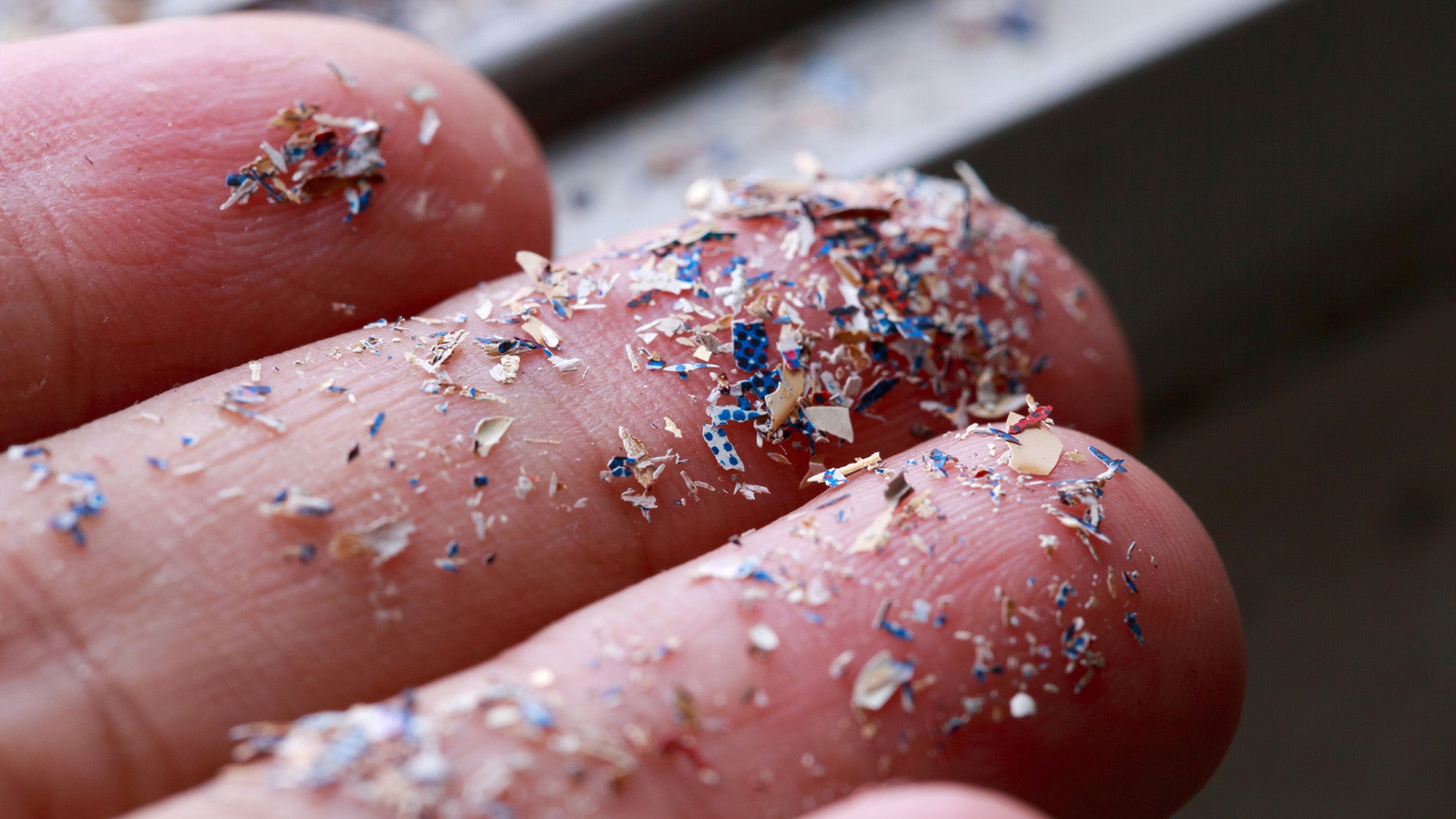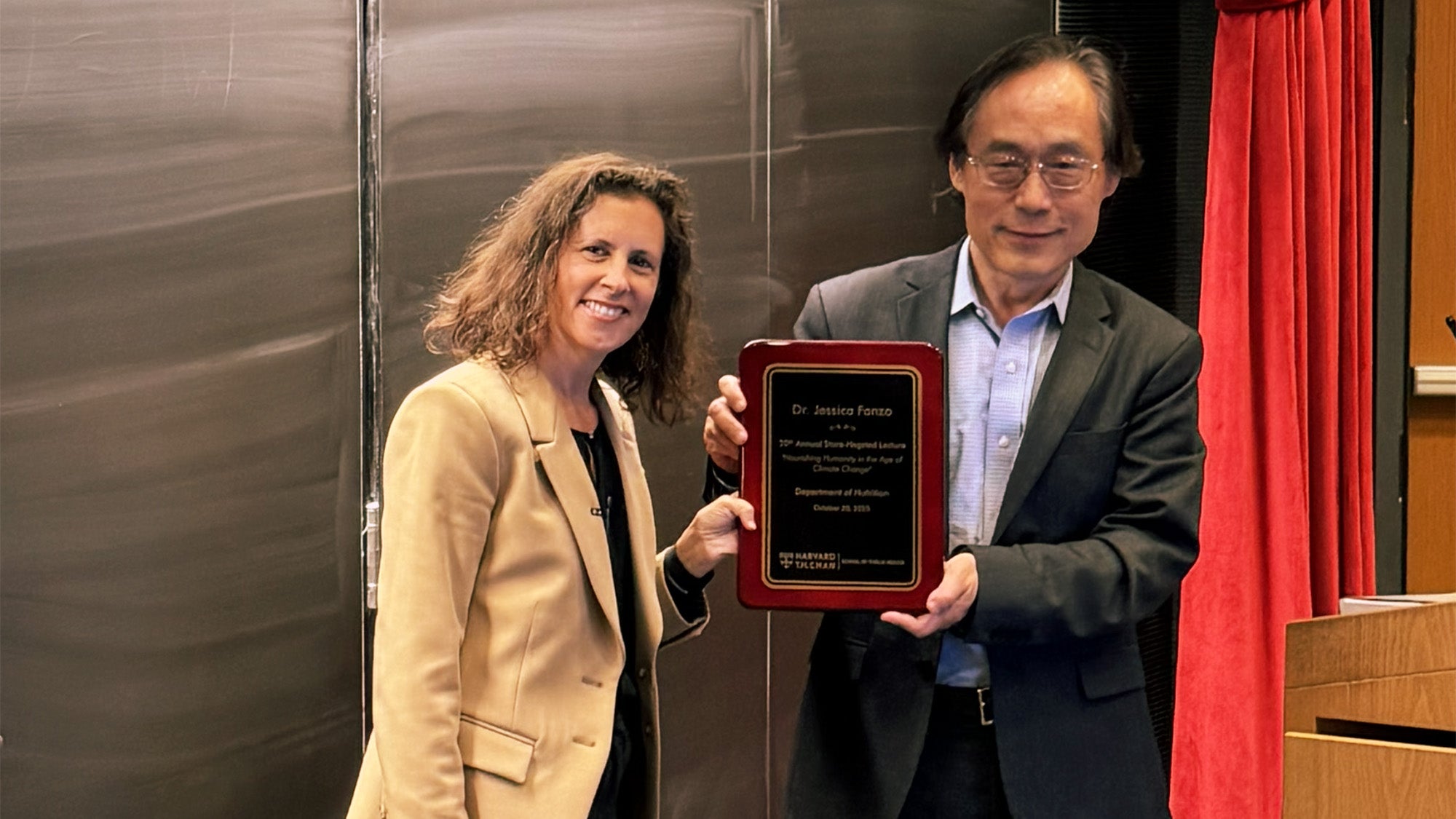Microplastics are everywhere and can harm human health, say experts

Microplastics—tiny fragments formed when plastic products degrade—have been detected in human tissues at increasing rates in recent years and have been linked with a variety of health harms. Experts from Harvard T.H. Chan School of Public Health say that more should be done to limit plastic pollution around the world.
In an Oct. 15 JAMA Insights article, Shruthi Mahalingaiah, Mark and Catherine Winkler Associate Professor of Environmental, Reproductive, and Women’s Health, Kari Nadeau, John Rock Professor of Climate and Population Studies, and David Christiani, Elkan Blout Professor of Environmental Genetics, gave an overview of the extent of pollution from microplastics and their known and potential health impacts. They noted:
- Plastics production jumped from 234 million tons in 2000 to 435 million tons in 2020 and is expected to jump by another 70% by 2040;
- Plastics contain some highly toxic chemicals such as flame retardants, per- and polyfluoroalkyl substances (PFAS), and phthalates that can migrate into the environment and into human bodies;
- Microplastics have been found in many foods, beverages, drinking water sources, clothing pieces, cosmetics, and other personal care products;
- Microplastics’ unique structure enables them to act as a vehicle for contaminants;
- Studies have shown that microplastic exposure can lead to damage to cells, DNA, and the immune response;
- Microplastics have been found in many human tissues, and their concentrations in tissues appear to be increasing over time; and,
- Observational studies have shown an association of microplastics with increased risk of heart attack, stroke, dementia, or early death.
The authors noted that although there are many local and national policies aimed at limiting plastic pollution, there are few international agreements in place to do so. They wrote, “International cooperation to limit plastic pollution and to find environmentally safe plastic alternatives is needed.”
Read the JAMA Insights article: Microplastics and Human Health
Learn more
Microplastics a growing challenge to health and the environment (Harvard Chan School news)


